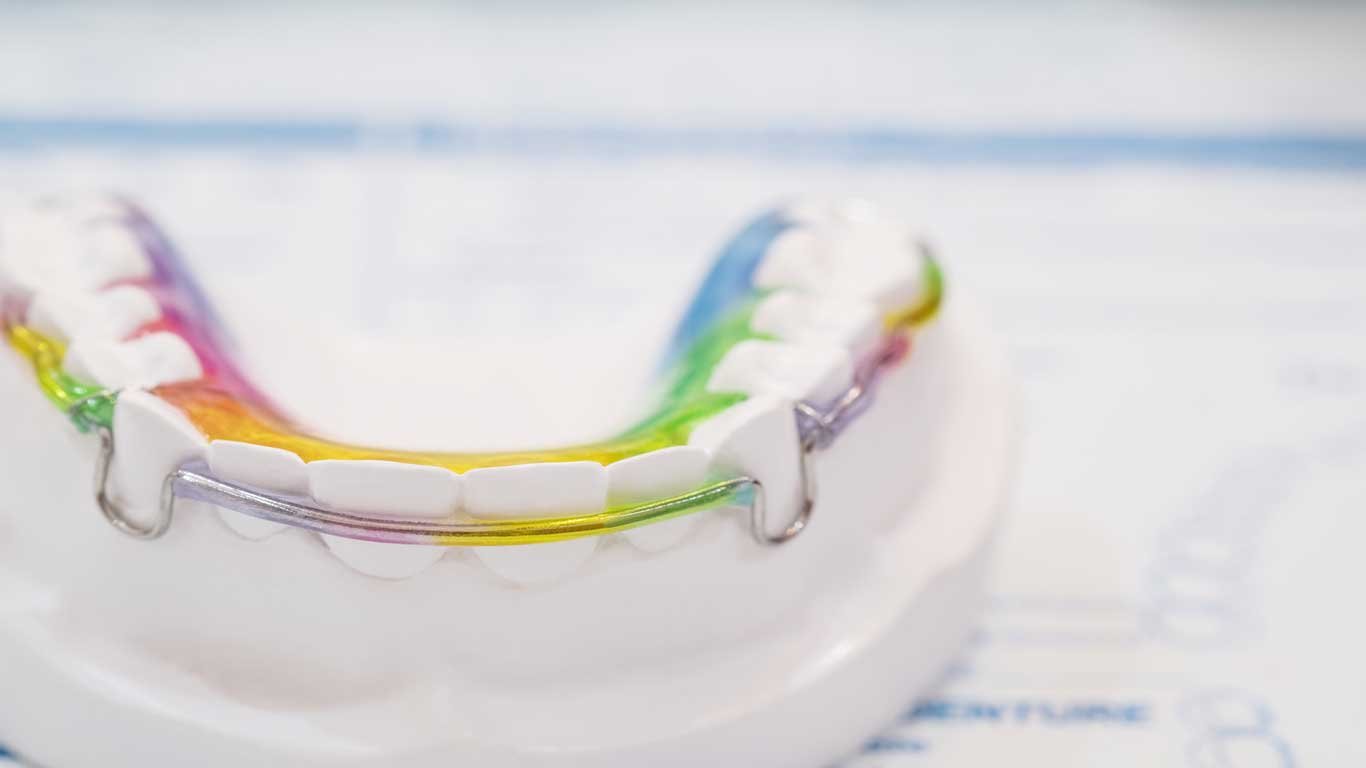Retainer Options
When it comes to maintaining the alignment of your teeth, choosing the right retainer options is crucial. Whether you’ve had prior orthodontic treatment or simply want to prevent natural shifts in your smile, a dental retainer can be an essential tool. Teeth can shift over time due to factors like changes in your jaw, aging, or even habits such as grinding.
There are several types of retainers to consider, and each has unique benefits depending on your situation. Whether you’ve had metal braces or another form of orthodontic treatment, there’s a retainer designed to meet your needs. Choosing the right one is key to ensuring your teeth remain in their desired position, giving you long-term satisfaction with your smile.
If you’re wondering which retainer is best for you, it’s important to consult with your orthodontist to find the most effective solution.
Retainer Options: Types of Orthodontic Retainers
Fixed Wire Retainers (Bonded Retainers)
A fixed wire braces retainer is glued behind your front teeth — making it invisible when you smile. This type of orthodontic retainer is ideal for keeping front teeth aligned long-term without having to remember to wear anything nightly. They are:
- Hidden from view
- Comfortable for most people
- Effective at keeping your teeth straight
Read More: Invisalign Consultation
However, they require more time and effort when cleaning. You’ll need to floss carefully with a floss threader or water flosser. Also, fixed retainers can break and must be repaired promptly to avoid tooth movement.
Broken Fixed Retainers
If your fixed dental retainer is broken partially or completely, it might be repairable. If not, you can either get a new fixed wire retainer or opt for a removable retainer. Consult your dental professional to determine the best option.
Read More: Invisalign Pros and Cons

Removable Retainers
Removable braces retainers can be worn either full-time or just at night. These are typically:
- Easy to clean
- Custom-made to fit your mouth
- Available in clear plastic (similar to Invisalign) or with a metal bar in front
Note: Only the metal bar design allows minor tooth adjustments, making it useful for small alignment corrections.
Read More: Invisalign Teen
Night Guards as Retainers
If you grind your teeth at night and need a night guard, it can double as a removable retainer. This ensures that your teeth stay in place while also protecting them from grinding damage. In such cases, you may also consider a separate orthodontic retainer for the opposite arch.
Read More: Orthodontics Before and After
Retainer Storage and Care Tips
- Always store removable retainers in a ventilated case
- Keep them away from pets, heat, and direct sunlight
- Never wrap them in napkins—they’re easily thrown away
Important Retainer Facts and FAQs
Prices vary by provider and retainer type:
- Removable retainers: $100–$300 per arch
- Fixed wire retainers: $250–$500+
Check with your orthodontist or dentist for exact pricing. Some insurance plans may cover a portion.
- Use a soft toothbrush with mild soap or a dedicated dental retainer cleaner
- Avoid toothpaste on removable retainers—it can be abrasive
- For fixed retainers, use floss threaders or water flossers daily
Your teeth can start to shift within days or weeks. If your braces retainer doesn’t fit anymore, don’t force it—schedule a visit with your orthodontist. You may need a new retainer or corrective treatment.
- Full-time for 9 months, then switch to nighttime wear
- Retainers are usually lifelong tools for alignment maintenance
- Most retainers need replacement every few years
Replace your orthodontic retainer if:
- It’s cracked or bent
- It smells bad after cleaning
- It no longer fits properly
Retainers may cause slight discomfort initially, including:
- Gum or lip irritation
- A tight feeling
- Difficulty speaking (mainly with removable types)
Most of this discomfort fades within a few days to a couple of weeks.
Yes. Young people’s teeth are more likely to shift due to growth. After metal braces or early alignment treatments, retainers are crucial to lock in those results.
Absolutely. Invisalign moves teeth, but once treatment ends, a dental retainer ensures your smile stays aligned. These retainers often look just like the aligners, making them easy to adjust to.
Once your braces are removed, there’s nothing stopping your teeth from shifting back to their original position. Wearing a retainer ensures they stay in place and don’t move. Think of it this way: braces align your teeth, but a retainer maintains that alignment, helping your teeth “retain” their new position.
Before eating or drinking, take out your retainer and enjoy your meal as usual. Just remember two key rules: always store your retainer in a safe place while eating, and never eat with it in.
New retainers may feel snug at first, but they should fit securely without causing pain. We ensure every retainer is comfortable on the first day and remake any that don’t fit properly. The key to keeping your teeth straight is wearing your retainer every night while you sleep.
Final Thoughts: Retainers Are for Life
Our bodies change — and so do our teeth. Whether you’ve completed orthodontic treatment or want to prevent natural shifting, choosing the right retainer braces is essential. A well-fitted orthodontic retainer will help protect your investment and your smile.
Still unsure which option is right for you? Contact our team at York Orthodontics to get a personalized recommendation.
Dr. Nima Mir is a specialist in orthodontics, known for providing high-quality care in creating beautiful and functional smiles. He is deeply committed to helping his patients achieve optimal dental health and aesthetic results. With a focus on personalized care, Dr. Mir works with patients to design tailored treatment plans that incorporate advanced techniques in orthodontics, including braces and Invisalign.
He has extensive training and education in the field, which allows him to offer a range of orthodontic treatments for both children and adults. Dr. Mir is known for his attention to detail and his dedication to staying current with the latest advancements in orthodontic technology and techniques.

